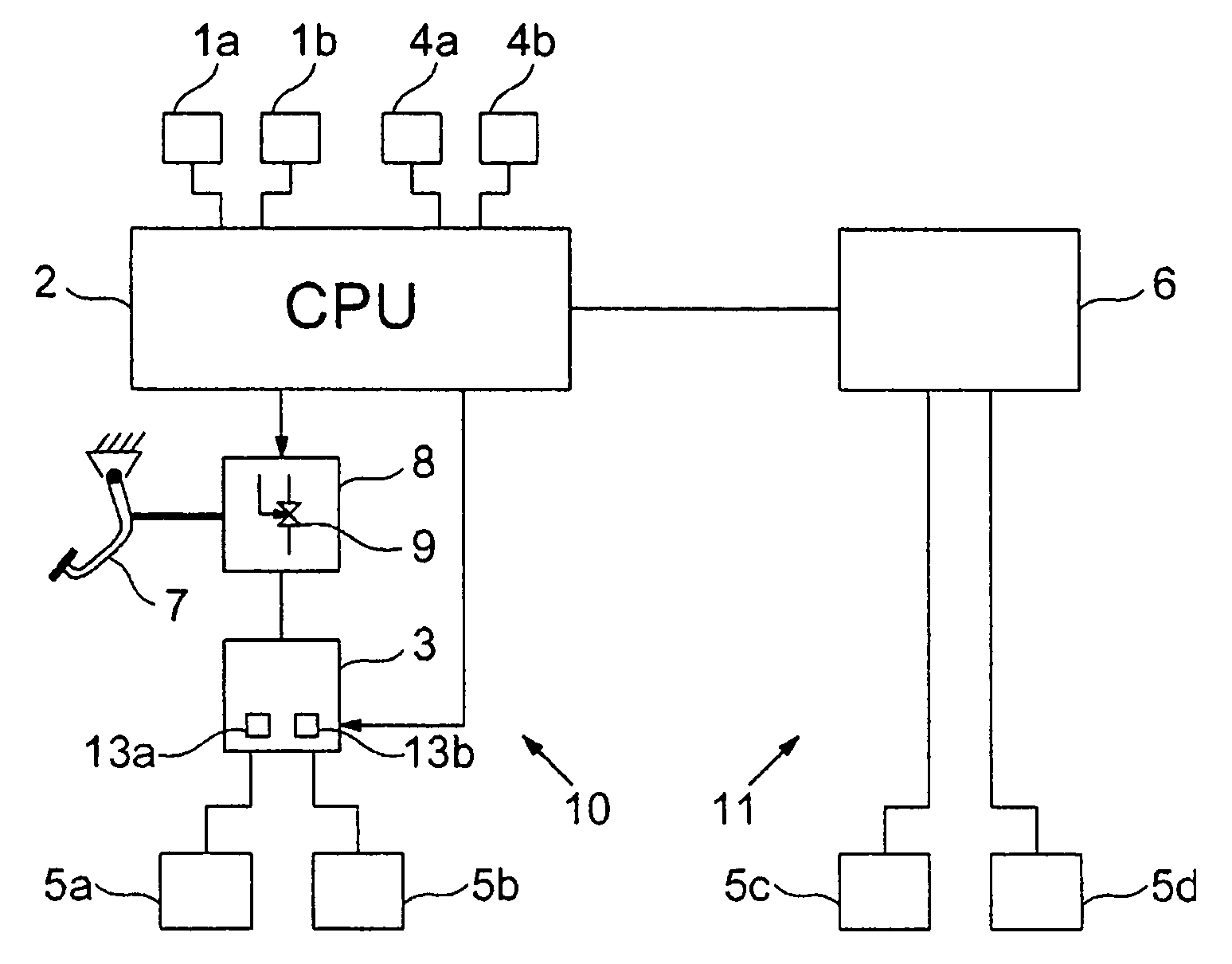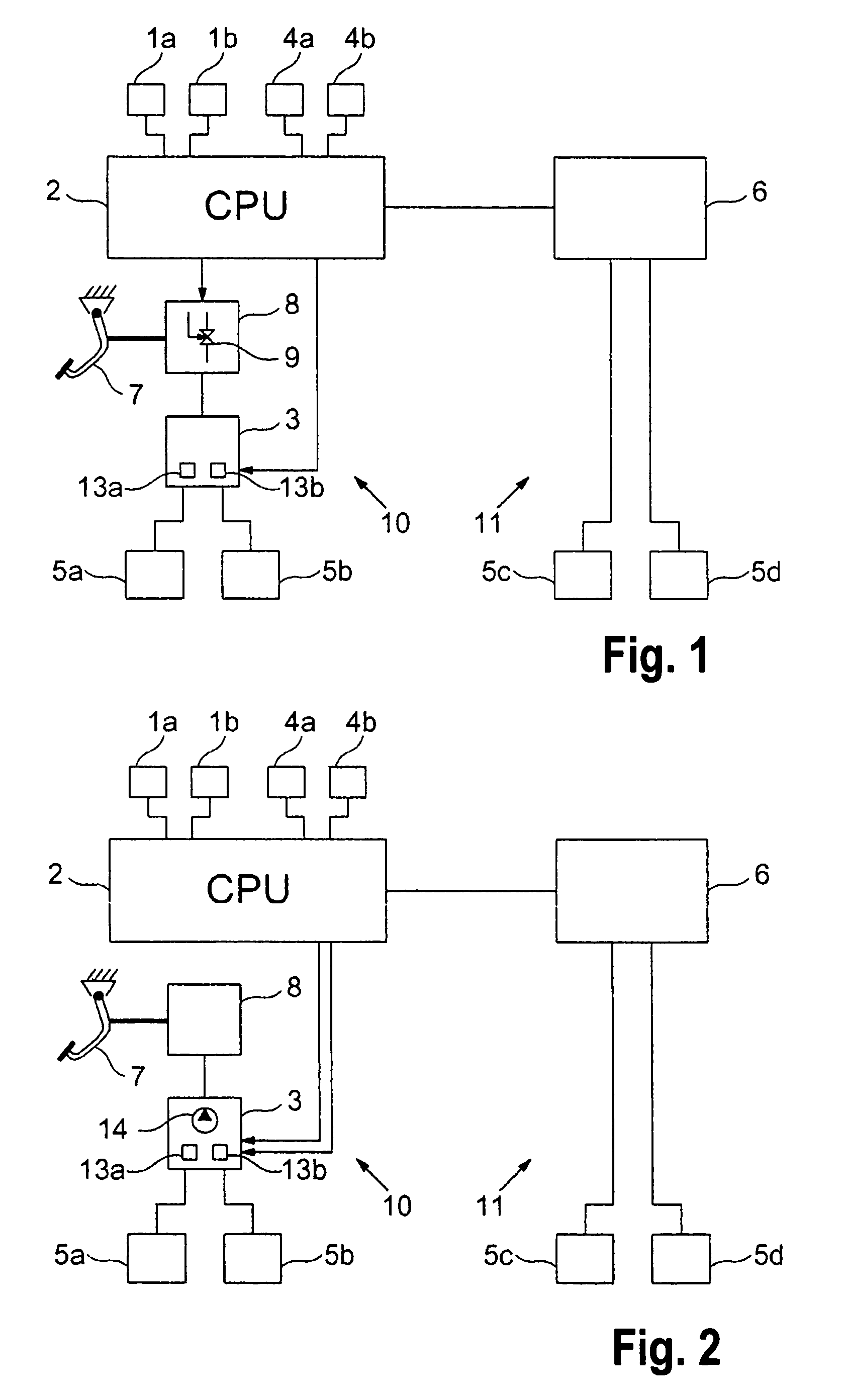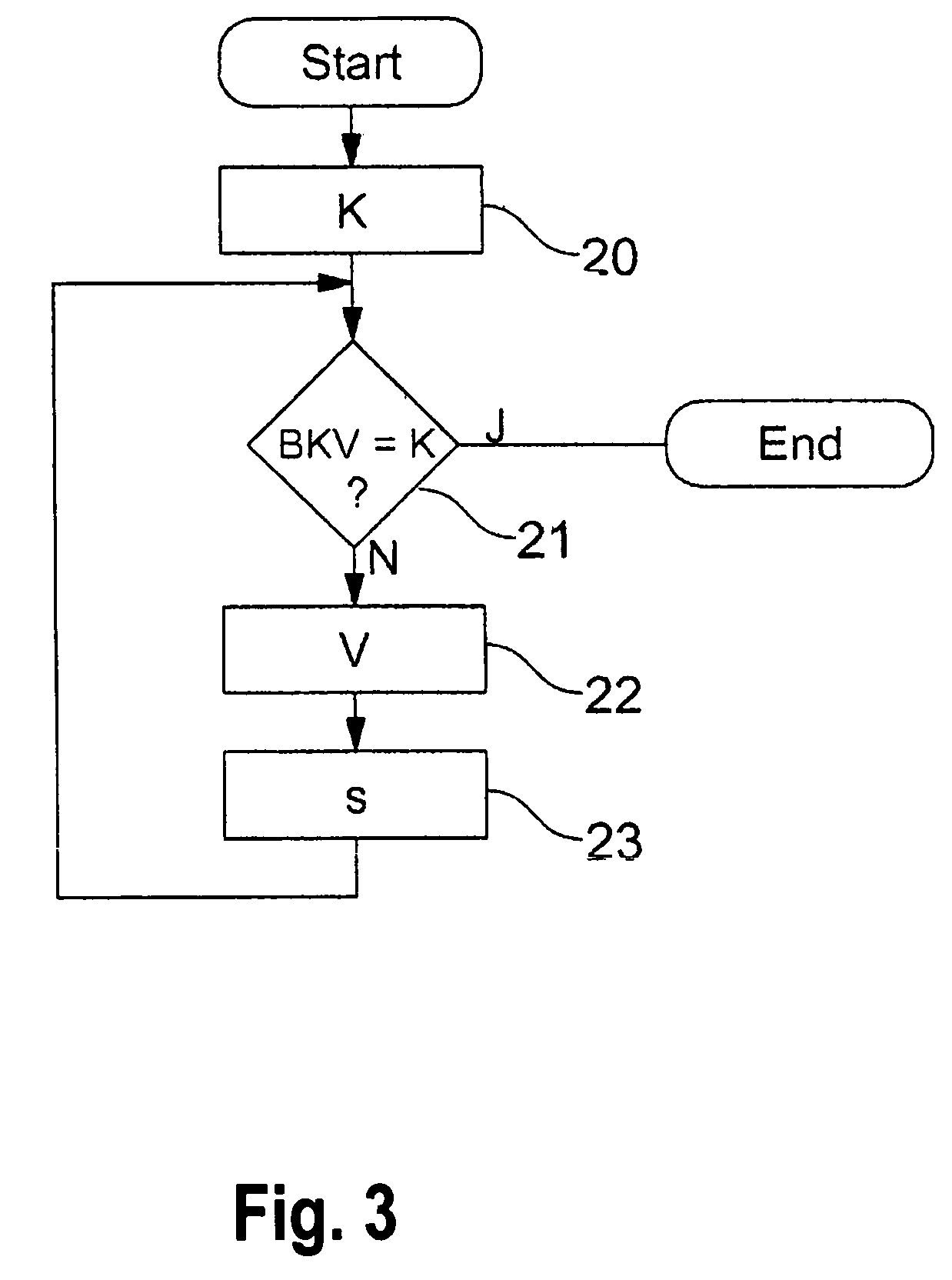Device and method for adjusting the pedal characteristic curve of a hybrid braking system during modified braking-force distribution
a hybrid braking system and characteristic curve technology, applied in the direction of braking systems, braking components, transportation and packaging, etc., can solve the problems of affecting the braking behavior of the vehicle and impairing driving safety
- Summary
- Abstract
- Description
- Claims
- Application Information
AI Technical Summary
Benefits of technology
Problems solved by technology
Method used
Image
Examples
Embodiment Construction
[0016]FIG. 1 shows a schematic representation of a hybrid braking system having a purely hydraulic service braking system 10 and an electrically operated service braking system 11, such as an electromechanical braking system (EMB). In this case, hydraulic service braking system 10 is assigned to the front axle including wheel brakes 5a, 5b, and electric service braking system 11 is assigned to the rear axle including wheel brakes 5c, 5d.
[0017]Braking pressure as a function of the driver's braking wish is applied to hydraulic wheel brakes 5a, 5b by a first control unit 2, and to electromechanical wheel brakes 5c, 5d by a second, separate control unit 6. However, a single, universal control unit may optionally be provided.
[0018]In the configuration shown, including two control units 2, 6, control unit 2 is preferably tasked with all functions regarding total braking system 10, 11, e.g., detecting a brake operation (of the service brake or the parking brake), and determines the brakin...
PUM
 Login to View More
Login to View More Abstract
Description
Claims
Application Information
 Login to View More
Login to View More - R&D
- Intellectual Property
- Life Sciences
- Materials
- Tech Scout
- Unparalleled Data Quality
- Higher Quality Content
- 60% Fewer Hallucinations
Browse by: Latest US Patents, China's latest patents, Technical Efficacy Thesaurus, Application Domain, Technology Topic, Popular Technical Reports.
© 2025 PatSnap. All rights reserved.Legal|Privacy policy|Modern Slavery Act Transparency Statement|Sitemap|About US| Contact US: help@patsnap.com



